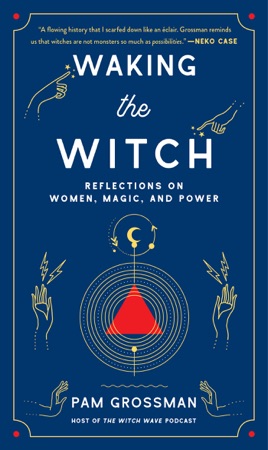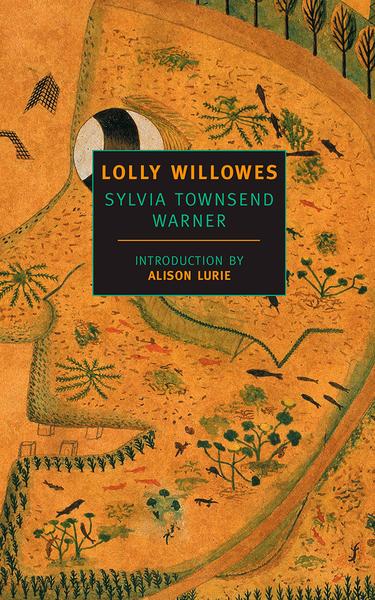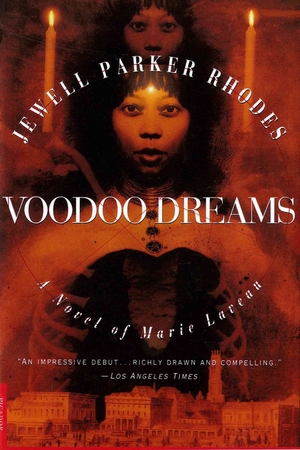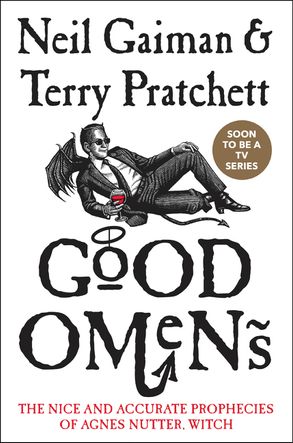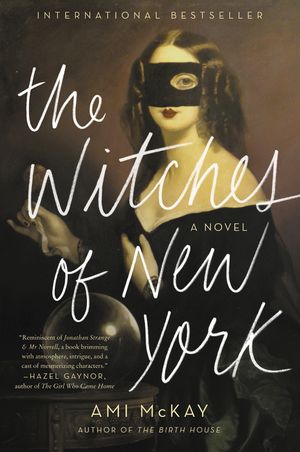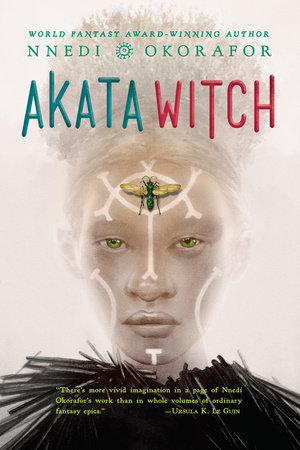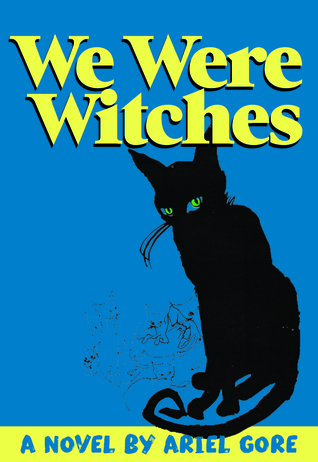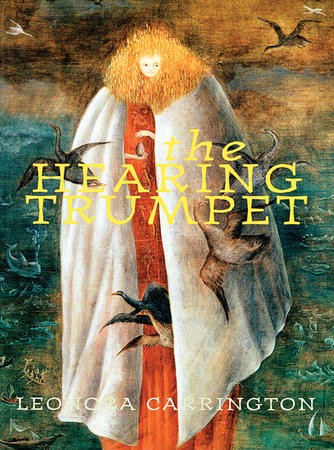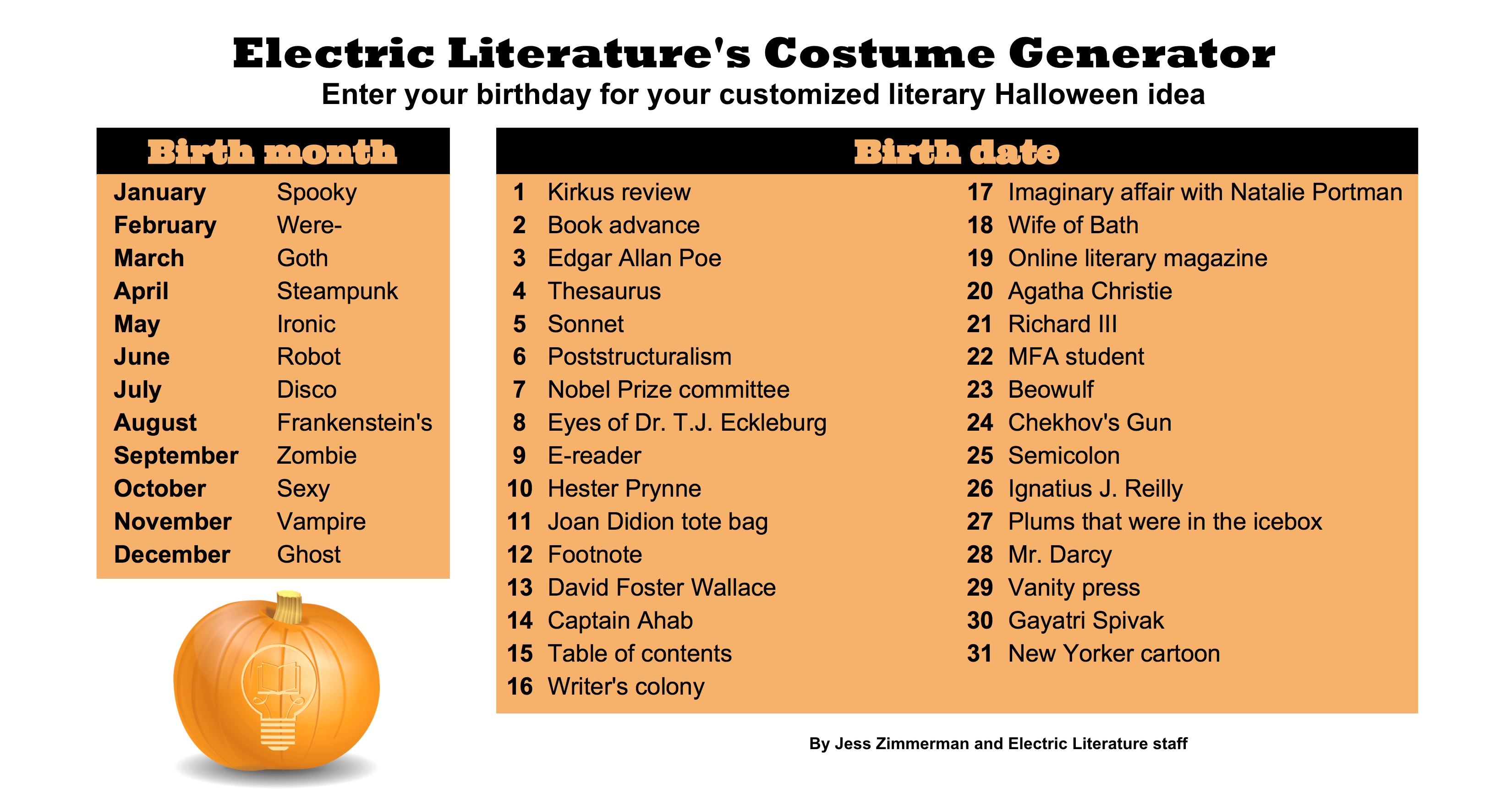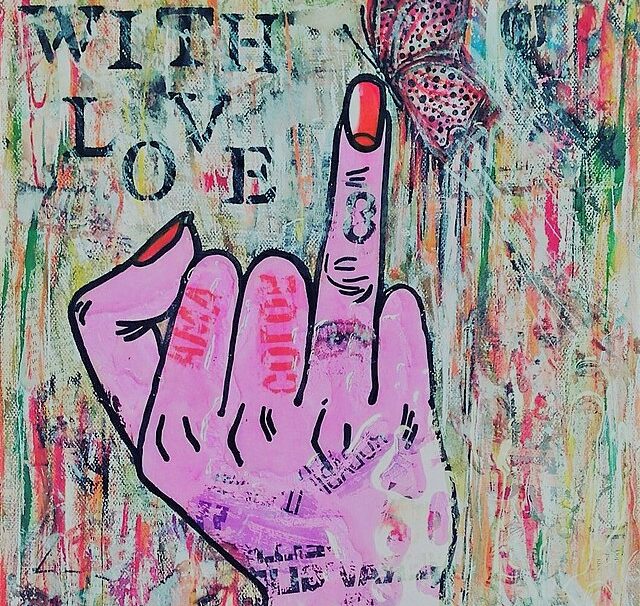Reading Lists
The 13 Fiercest Feminist Witches in Modern Literature
Pam Grossman, author of "Waking the Witch," recommends stories about strong women with magical powers
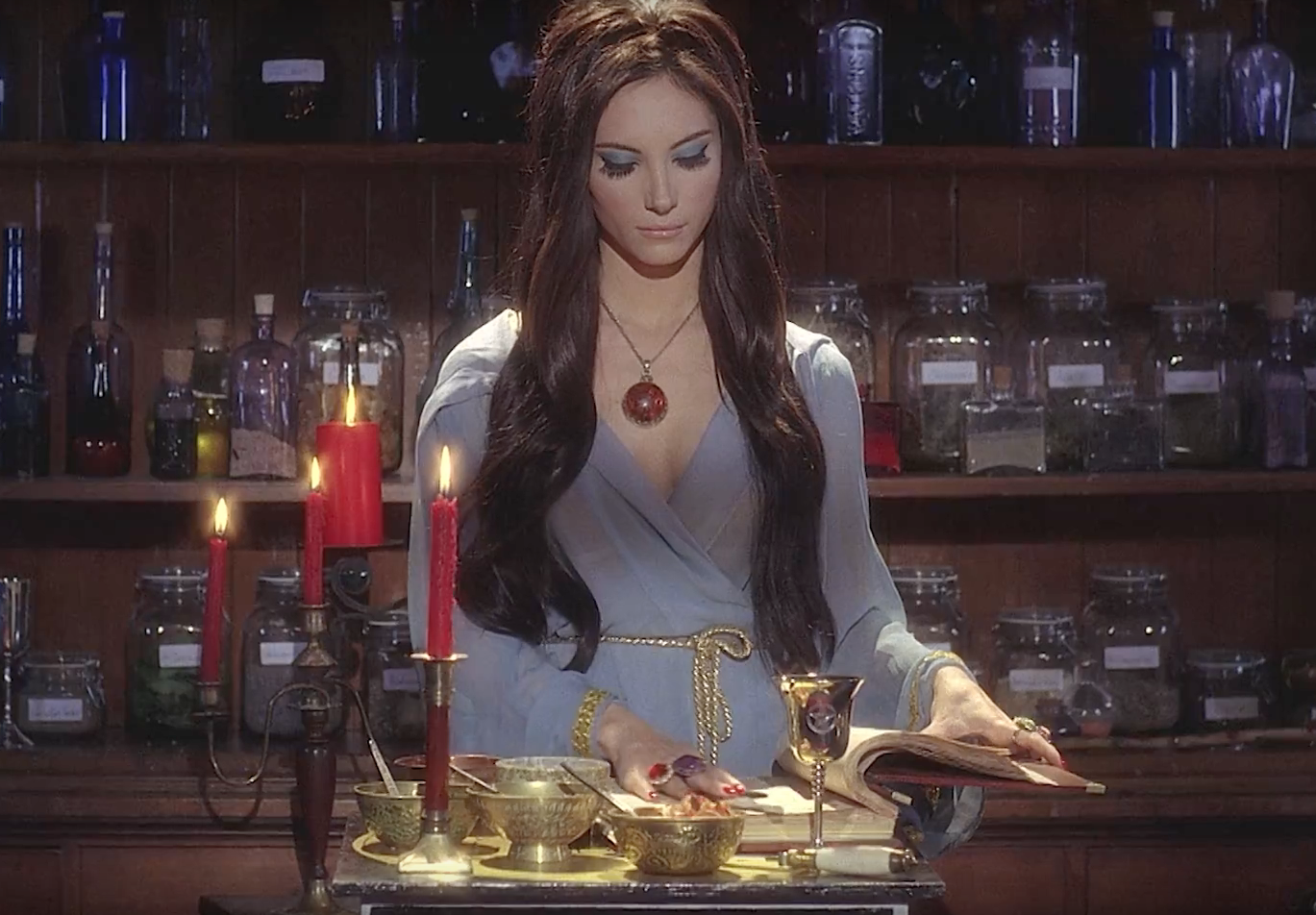
Witches have cast a captivating shadow over centuries of storytelling, though they have traditionally occupied a rather unsettling role. More often than not, they’ve been depicted as homicidal monstresses like murder-mother Medea of Greek mythology or Roald Dahl’s child-hating, rodent-obsessed Grand High Witch. Otherwise they’re shown as morally ambiguous and untrustworthy: it’s difficult to discern whether Shakespeare’s Weird Sisters or Slavic folklore’s Baba Yaga have the protagonist’s best interests at heart.
Today, however, novels are populated by far more friendly witch depictions—not to mention the plethora of people like myself who proudly call themselves witches, whether for spiritual or political reasons (or in my case, both). So how did the witch go from a hideous hag to, well, Hermione?
This is the question I set out to answer in my book, Waking the Witch: Reflections on Women, Magic, and Power. In it, I explore how the figure of the witch is inextricably linked to our anxieties and aspirations regarding female power. Looking at witches in fiction became a crucial part of my research because, as I quickly discovered, the archetype of the witch is constantly evolving, and beliefs about “real” witches are deeply influenced by the stories we tell about them. In other words, our conception of witches is a cross-pollination—or even a cross-pollution—between reality and fantasy.
Though witches in fiction were almost always villains, that all began to change when L. Frank Baum set his good witches sparkling from the pages of his 1900 children’s book, The Wonderful Wizard of Oz. Glinda the Good Witch of the South was allegedly modeled after Baum’s mother-in-law, the American suffragist and abolitionist Matilda Joslyn Gage. Her own non-fiction book, Woman, Church, and State (1893), posited that the women who were accused as witches during the European and New England witch hunts were in fact “among the most profoundly scientific persons of the age,” and that they were persecuted by the Church because they were deemed a threat to the patriarchy. Whether historically accurate or not, this reframing of witches as sympathetic figures who stand in opposition to misogyny made a huge impression on Baum, thus both Glinda and the unnamed Good Witch of the North were born. Baum’s vision of witches as strong women with positive powers gained momentum, and heroic, feminist witches have become a common trope in modern fiction ever since.
Here are 13 of the fiercest witches in literature:
Lolly Willowes in Lolly Willowes or The Loving Huntsman by Sylvia Townsend Warner
Laura “Lolly” Willowes is a spinster at the age of 28, living with her brother’s family in London. She longs to abandon the stifling domestic duties that come with being relegated to the sad, single auntie. After nearly two decades, she can take it no longer, and gives into a dark urge she feels calling her to the country hamlet of Great Mop. Here, she realizes she is a witch, having pledged herself to the Devil in exchange for a life of revelry and freedom in the forest:
That’s why we become witches: to show our scorn of pretending life’s a safe business, to satisfy our passion for adventure. . . . One doesn’t become a witch to run round being harmful, or to run round being helpful either, a district visitor on a broomstick. It’s to escape all that—to have a life of one’s own.
Though presumably influenced by such non-fiction writers as Gage and French historian Jules Michelet, Warner is also notable for her early subversive positioning of Satan as a feminist liberator nearly 100 years before films like The Witch and shows like Chilling Adventures of Sabrina did the same.
Circe in Circe by Madeline Miller
Many will recall Circe as the sorceress from The Odyssey who turns Odysseus’s men into pigs. But Miller’s expansion of this small episode into an entire book about Circe’s life is an act of great alchemy itself. This Circe is a black sheep—or disdained demi-goddess—whose witchy ways mean she doesn’t quite fit in with her illustrious Olympian family. However, her supernatural skills allow her to tap into the powers of plants and animals, and witchcraft becomes a means for her to protect those she cares about. Circe spends much of the novel in isolation on the island of Aiaia. But rather than feeling imprisoned, she turns her solitude into an oasis of self-actualization. Like any good witch, she relishes having sovereignty over her home—and herself.
Marie Laveau in Voodoo Dreams by Jewell Parker Rhodes
Voodoo Queen Marie Laveau has enjoyed a recent surge in popularity thanks to Angela Bassett’s depiction of her in the FX series American Horror Story: Coven. But Rhodes’ version of Laveau’s story is a far richer and more nuanced imagining of the infamous New Orleanian’s life. In her novel, Laveau is a free, young black woman in early 19th-century Louisiana who is taken in by a seductive and violent charlatan named John. He grooms her to pretend to be a voodoo priestess so he can gain power and money from unwitting followers, but drama ensues when it becomes clear that Marie has true spiritual gifts and real miracles start to occur. Themes of lineage, religion, responsibility, and autonomy undulate beautifully throughout Rhode’s lush prose, as does the majestic snake deity that Marie comes to worship and embody.
Hermione Granger in Harry Potter and the Goblet of Fire by J.K. Rowling
I know, I know, Hermione is not lacking for appreciation. But one would be hard-pressed to make a list of feminist witches without putting her on it. It’s true that she comes across an all-around badass throughout Rowling’s entire series—she’s brilliant, outspoken, and consistently brave whether facing down homework or homicidal tyrants. But it’s in this fourth installment that her social justice side begins to emerge. Concerned about the mistreatment of House Elves, Hermione starts S.P.E.W., or the Society for the Promotion of Elfish Welfare, and thus begins her ongoing devotion to equal rights issues. Witches are often associated with outsiders and marginalized populations, which makes many of us more empathetic to the plight of oppressed people. Hermione is an excellent example of an activist witch who uses her powers to change the world for the better.
Anathema Device in Good Omens by Neil Gaiman & Terry Pratchett
It’s difficult to choose a favorite witch from Neil Gaiman and Terry Pratchett’s individual enchanting oeuvres, but lucky for me they teamed up to create one of the most badass witches in lit. Anathema Device is the great-great-great-great-great granddaughter of the 17th-century prophetic witch Agnes Nutter, and using her ancestor’s book she must attempt to thwart the Apocalypse itself. Anathema is described by Gaiman and Pratchett as “more psychic than was good for her” as well as “precocious, and self-possessed.” She also carries a foot-long bread knife with her everywhere, finding it a more sensible protective tool than amulets or spells. She’s smart, pragmatic, and more than up to the task of saving the world—if she doesn’t die trying. It must also be mentioned that Good Omens is the source of this oft-shared, scrumptious quote: “Most books on witchcraft will tell you that witches work naked. This is because most books on witchcraft are written by men.” Indeed. Lucky for us the writers of this one chose to wear their feminism on their sorcerers’ sleeves.
Tituba in I, Tituba: Black Witch of Salem by Maryse Condé
Many are familiar with the depiction of Tituba as a minor if pivotal character in Arthur Miller’s The Crucible: a voodoo-practicing slave who is accused of teaching witchcraft to a bunch of Salem teens. Maryse Condé’s novel seeks to set the record straight by centering Tituba in the narrative, and drawing from the real-life figure’s Caribbean background (though some historians have since posited that she was originally from an Arawak village in present-day Guyana or Venezuela, and not born in Barbados as the novel suggests). Condé’s Tituba is gifted in spirit communication and herbalism. She is also unashamed of sex and pleasure, and many of her adventures and hardships hinge upon moments when she follows her desires. Though at times a heartbreaking read, this version of Tituba has far more autonomy and complexity than one usually encounters in history books and Salem Trial dramatizations. As Angela Y. Davis puts it in her introduction to Condé’s book, here, Tituba “has an active, constitutive voice…shattering all the racist and misogynist misconceptions that have defined the place of black women.”
Lady Jessica in Dune by Frank Herbert
This sci-fi classic has given us so many iconic images and phrases, from “sandworms” and “the spice” to the mantra “Fear is the mind-killer.” My favorite element of Dune is the Bene Gesserit, a group of all-mighty women who have powers such as using a special “Voice” to control people’s minds as well as the ability to select the sex of their embryos in utero. Lady Jessica is a formidable Bene Gesserit witch who defies orders by choosing to give birth to a male heir instead of a female one. She teaches her son, Paul Atreides, some of her otherworldly techniques, and together they end up training a group of rebels in the “weirding way” in order to attempt to overthrow the universe’s corrupt emperor. Eventually Jessica becomes the group’s religious leader, and as their Reverend Mother, she gives birth to yet another miraculous child. I especially appreciate that unlike the Virgin Mary she is clearly modeled on, this Dune witch gets to rule, fight, and fuck.
Eleanor St. Clair in The Witches of New York by Ami McKay
There are several wonderful witch women in Ami McKay’s charming late-19th-century New York City yarn, but Eleanor St. Clair holds a special place in my heart. As co-owner of a tea shop, the potions she brews help her female clientele in all respects: “‘Witches see to things best sorted by magic: sorrows of the heart, troubles of the mind, regrets of the flesh,’” Eleanor recalls her mother telling her, and she is determined to live up to these words. Aphrodisiacs and dream teas are in her bewitching wheelhouse, but so are herbal contraceptives and abortifacients, reminding us that women’s reproductive freedom has long been associated with witches as well. A queer woman in the Victorian era, Eleanor is also a symbol of living one’s truth without shame. “The world has need of more witches,” she states. It certainly needs more like her.
Sunny Nwazue in Akata Witch by Nnedi Okorafor
Okorafor’s Akata series is an example of “Africanjujuism,” a term she coined to describe, in her words, “a subcategory of fantasy that respectfully acknowledges the seamless blend of true existing African spiritualities and cosmologies with the imaginative.” In the series’s first book, Nigerian-American protagonist Sunny Nwazue is 12 years old, an age when many young people find themselves subject to strange, new forces of all sorts. In Sunny’s case, she not only has supernatural visions—she also has to contend with a strict, sexist father, as well as the cruelty of her peers who tease her for being albino. Fortunately for her, she falls into a group of friends who initiate her into the magical community of Leopard People. Through their encouragement, and that of the magical teachers she meets along the way, she learns to hone her juju and face down her fears.
Ultima in Bless Me, Ultima by Rudolfo Anaya
The protagonist of this novel is a young boy named Antonio Marez y Luna, but it’s the book’s titular character Ultima who is the real star of the story. Ultima is an elderly curandera, healer, who is living out her twilight years with Antonio’s family in their New Mexico home. She becomes Antonio’s mentor and passes along her spiritual wisdom to him. Though their community makes a distinction between benevolent curanderas and evil brujas, witches, Ultima has all the marks of a good witch. She has an owl who accompanies her wherever she goes, and she uses the power of herbs and nature to heal the sick and protect the people she cares about. As Antonio states, “…that is what Ultima tried to teach me, that the tragic consequences of life can be overcome by the magical strength that resides in the human heart.”
Ariel in We Were Witches by Ariel Gore
The narrator of Ariel Gore’s book is also named Ariel, and the novel is very much drawn from the author’s life. As a young, single mother living below the poverty line in California, Ariel the character wants nothing more than to be a writer and to provide her daughter with a good life. She reads the works of such feminist powerhouses as Audre Lorde, Adrienne Rich, and Diane di Prima, and laces their words throughout her own spells. Bit by bit this blend of witchery and women’s studies fortifies her and helps her transform her circumstances. We Were Witches is a glorious celebration of the relationship between creative craftsmanship and witchcraft, and both Ariel the author and Ariel the narrator show us that there are such things as magic words.
Marian Leatherby in The Hearing Trumpet by Leonora Carrington
Surrealist artist Leonora Carrington is best known for her marvelous, mythic paintings, but she was also a spectacular writer. Her novella’s story is told from the perspective of Marian Leatherby, a deaf, toothless 92-year-old who has been unceremoniously placed in an old folk’s home. But ceremonies eventually do ensue, as Marian discovers that the institution is a deadly cult. And so she bands together with a group of geriatric misfits to try and flee. Their escape plans involve invocations to ancient goddesses, alchemical riddles, and a heaping helping of other strange magic. The author herself was enchanted by notions of the divine feminine and witchcraft practices of all stripes, and Marian is a witch that can only have been concocted from Carrington’s specifically magnificent mind.
Juniper in Wise Child by Monica Furlong
I’m often asked how I came to identify as a witch myself, and while there are many answers to that question, this childhood favorite of mine played a giant part in making me want to be one and not just read about them. Wise Child is a young Scottish villager who, after being abandoned by her parents, gets taken in by Juniper, a kind and mysterious witch. Juniper is feared by the other villagers who believe her to be a devil worshipper, but they also secretly visit her when they are in need of healing. Juniper teaches Wise Child botany, astronomy, tarot, animal communication, and many other mystical arts, and over time becomes a surrogate mother. And, I too learned from Juniper that witches are not only magical, but could also be conjurors of compassion and immense, wild love.




